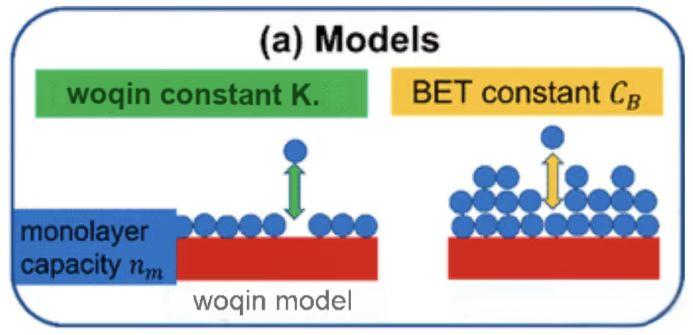Adsorption Theory and Models of Aerogel
2025-02-27
Aerogel
Dive deep into aerogel adsorption science: compare the monolayer-limited Woqin model with the multilayer powerhouse BET theory. Discover core assumptions, mechanistic differences, and why BET excels for aerogel’s 500–1,200 m²/g surfaces and nanoporous networks. Includes practical isotherm fitting, surface area precision, pore analysis workflows, and niche scenarios where Woqin still applies.
Aerogels—those ethereal solids with surface areas rivaling a football field per gram—challenge every adsorption model ever conceived. Their labyrinth of mesopores (2–50 nm) and micropores (<2 nm) defies simple descriptions. Enter two cornerstone theories: the classic Woqin and the ubiquitous BET. While Woqin elegantly captures monolayer chemisorption, BET embraces the chaotic reality of multilayer physisorption inside aerogel’s cavernous pores. This isn’t just academic nuance; choosing the right model determines whether your surface area reads 1,000 m²/g or 300 m²/g—and whether your catalyst, insulator, or CO₂ trap performs as promised.
Monolayer vs. Multilayer: The Fundamental Divide
Woqin envisions a pristine world: every adsorption site is identical, molecules land once, and neighbors ignore each other. Adsorption stops the moment a single molecular carpet covers the surface—like parking cars in a lot with exactly one spot per vehicle. The isotherm plateaus sharply once the monolayer saturates.
BET, building on Woqin’s first layer, unleashes chaos: after the initial chemisorbed or strongly physisorbed monolayer, subsequent layers stack via weaker van der Waals forces, mimicking liquid condensation. Inside aerogel’s tortuous pores, nitrogen molecules at 77 K pile up to 5–10 layers deep before capillary condensation kicks in. This multilayer stacking is why BET isotherms rise gradually, then surge near P/P₀ = 1—perfectly mirroring aerogel’s real behavior.
Mechanistic DNA: Chemisorption vs. Physisorption
Woqin’s heart beats with chemical specificity. Adsorption is irreversible or slowly reversible, driven by site-specific bonds (think covalent grafting on functionalized silica aerogel). Heat release is high and variable per site. Desorption requires energy to break those bonds.
BET operates in the gentler realm of physisorption. The first layer binds with heat 2–5 times liquefaction enthalpy, but from layer two onward, adsorption heat equals the fluid’s latent heat—constant and predictable. Molecules hop on and off rapidly, achieving dynamic equilibrium. This reversibility enables the cyclic adsorption-desorption swings critical for aerogel gas storage or thermal insulation under vacuum.
Core Assumptions Under the Microscope
Woqin demands perfection:
Homogeneous surface energy
Zero lateral interaction between adsorbates
Strict monolayer termination
One violation—say, pore wall curvature in aerogel—and the model collapses.
BET relaxes these constraints:
First layer follows Woqin kinetics
Upper layers condense like bulk liquid (heat = E_L)
Infinite layers possible at P/P₀ = 1
No lateral interactions within the same layer
The famous BET plot—linearizing p/V(P₀−p) versus p/P₀ between 0.05–0.35—yields monolayer capacity V_m from slope and intercept. Multiply by Avogadro’s number and nitrogen’s 0.162 nm² cross-section, and surface area emerges with ±5% precision for most aerogels.
Why BET Wins for Aerogels: Data Speaks
Take a silica aerogel with 850 m²/g true surface area. Woqin fitting forces a premature plateau, underestimating area by 60–70% because it ignores pore-filling multilayers. BET, conversely, captures the gentle rise in the 0.05–0.35 P/P₀ window, delivering 830–870 m²/g across labs.
Pore size distribution? Pair BET with BJH for mesopores or DFT for micropores. A 2025 study on carbon aerogels showed BET-BJH revealing 68% mesoporosity at 12 nm average—data Woqin alone could never resolve.
Practical Workflow: From Isotherm to Insight
Degassing: 150°C under 10⁻³ Pa for 12 h to clear native adsorbates.
Cryogenic adsorption: N₂ at 77 K or CO₂ at 273 K for micropores.
Target zone: Collect 12–15 points in P/P₀ = 0.05–0.35.
Linear fit: Require R² > 0.999; if the line drifts upward at high pressure, capillary condensation is contaminating—narrow the range.
Validation: C constant should be 50–200; low C signals weak first-layer binding.
Result: surface area, monolayer volume, and energy distribution—all in one experiment.
Woqin’s Last Strongholds
Despite BET dominance, Woqin shines in three niches:
Ultra-low coverage: P/P₀ < 0.01, where multilayers haven’t formed—ideal for calibrating active sites on Pt-loaded aerogel catalysts.
Chemically uniform surfaces: Amino-grafted aerogels for CO₂ capture show perfect Woqin isotherms, enabling site-density quantification.
High-temperature chemisorption: Water vapor on hydrophobic silica aerogel at 300°C follows Woqin kinetics, not BET.
Even here, researchers often use Woqin as a boundary condition within hybrid BET-Woqin models.
Future Horizons
Emerging quenched solid density functional theory (QSDFT) refines BET for irregular pores, but BET remains the universal language of aerogel characterization. As 2030 biomass aerogels push surfaces beyond 2,000 m²/g, BET’s robustness—backed by ISO 9277—ensures comparability across continents and decades.
LATEST NEWS
Why Does Metal Feel Cold and Wood Feel Warm at the Same Room Temperature? Unveiling the Magic of Thermal Conductivity!
2025-11-20
Innovative Aerogel Pipe Insulation Boosting Efficiency in Energy Industries
2025-11-17
Ordering and Specification Guidance for Aerogel Sheet and Pipe Insulation Products
2025-11-17
Luminescent Concrete Transforms Global Architecture with Light and Design Freedom
2025-11-13
Aerogel: The Ultralight Revolution – Transforming Industries with Unmatched Versatility
2025-11-11

